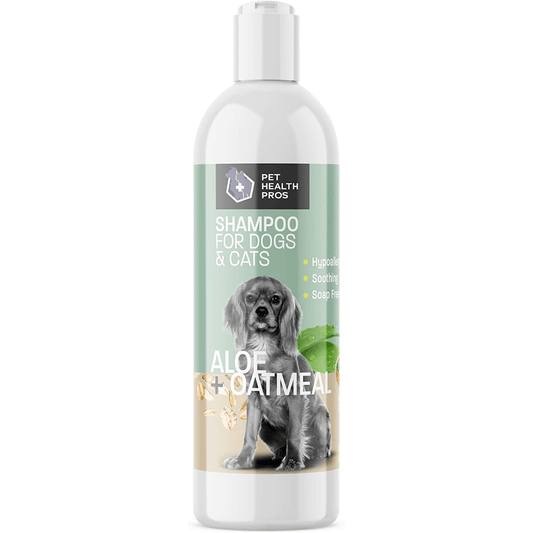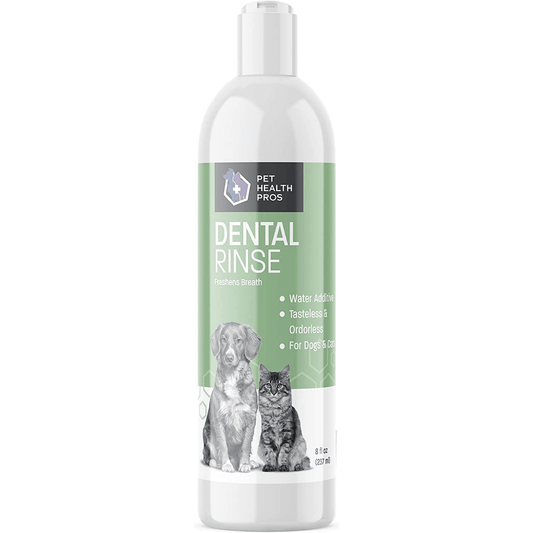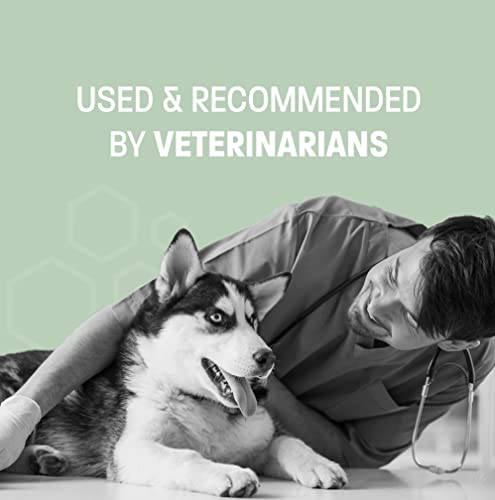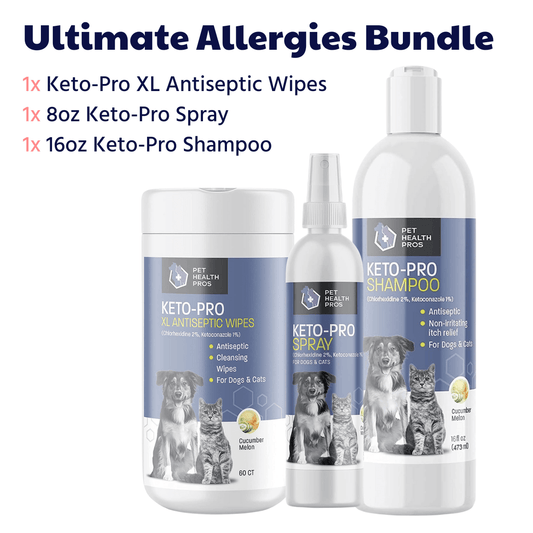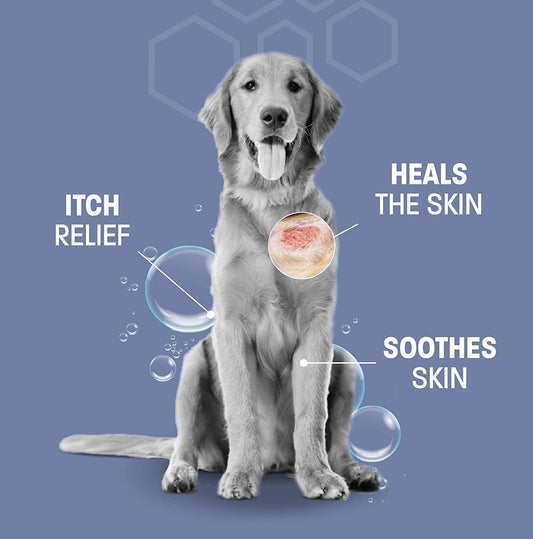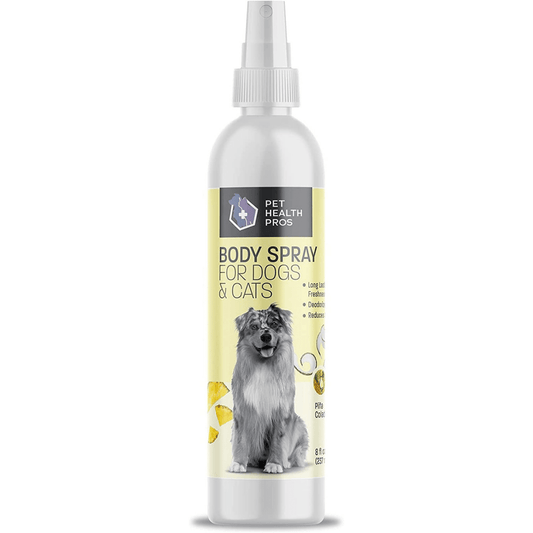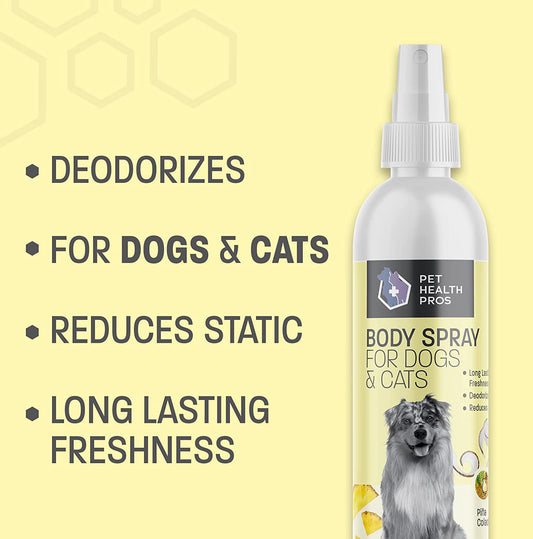If you're a dog owner, you know how important it is to protect your furniture from those curious teeth. Dogs often chew on things they shouldn't, leading to damaged items and frustrated owners. One effective solution is to create a DIY no chew spray for dogs. This simple guide will help you understand why dogs chew, how to make your own spray, and tips to prevent chewing in the first place.
Key Takeaways
- Understanding why dogs chew can help you address the behavior.
- Using safe ingredients is crucial when making a no chew spray.
- Follow a simple step-by-step guide to create your own spray.
- Apply the spray correctly to ensure it works effectively.
- Consider additional strategies to prevent chewing beyond just sprays.
Understanding the Need for a DIY No Chew Spray
Dogs are naturally curious creatures, and sometimes this curiosity leads them to chew on furniture. Understanding why dogs chew is essential for preventing damage to your belongings. Here are some common reasons:
Why Dogs Chew Furniture
- Boredom: Dogs may chew to entertain themselves when they have nothing to do.
- Anxiety: Stressful situations can lead dogs to chew as a coping mechanism.
- Teething: Puppies often chew to relieve discomfort from their growing teeth.
Common Household Items Dogs Chew
Dogs can chew on a variety of items around the house, including:
- Shoes
- Couches
- Electrical cords
- Wooden furniture
Signs Your Dog Needs a No Chew Spray
If you notice your dog engaging in destructive chewing, it may be time to consider a no chew spray. Look for these signs:
- Frequent chewing on furniture or personal items.
- Signs of anxiety or stress in your dog.
- A lack of appropriate chew toys available for your dog.
A DIY no chew spray can be a simple and effective solution to protect your furniture while ensuring your dog's safety.
By understanding the reasons behind your dog's chewing habits, you can take proactive steps to protect your home and keep your pet happy.
Ingredients for an Effective DIY No Chew Spray
Safe Ingredients for Dogs
When creating a no chew spray, it’s important to use ingredients that are safe for your furry friend. Here are some safe options:
- Apple cider vinegar: This has a strong smell that dogs dislike.
- Citrus juice: Dogs often find the scent of citrus unpleasant.
- Bitter apple spray: A common deterrent that is safe for pets.
Common Household Ingredients to Use
You can make your no chew spray using items you likely already have at home. Consider these:
- Water: The base for your spray.
- Vinegar: Acts as a deterrent and is safe for pets.
- Essential oils: Such as lemon or orange, but use them sparingly.
Ingredients to Avoid
Not all ingredients are safe for dogs. Avoid using:
- Alcohol: Can be harmful to pets.
- Hot spices: Such as chili powder, which can irritate.
- Toxic plants: Like certain essential oils (e.g., tea tree oil).
Remember, always test a small area of your furniture first to ensure the spray does not cause damage.
By using the right ingredients, you can create an effective no chew spray that helps protect your furniture while keeping your dog safe.
Step-by-Step Guide to Making Your Own No Chew Spray
Gathering Your Materials
To create your own no chew spray, you will need to gather a few simple materials. Here’s what you’ll need:
- Apple cider vinegar
- Water
- A spray bottle
- A funnel (optional)
Mixing the Ingredients
Once you have your materials ready, it’s time to mix them. Follow these steps:
- Mix one part apple cider vinegar to five parts water in a spray bottle. This combination is effective and safe for your dog.
- If you want to add a scent, consider including a few drops of lemon juice or essential oils that are safe for pets.
- Shake the bottle gently to combine the ingredients well.
Testing the Spray
Before applying the spray to your furniture, it’s important to test it:
- Spray a small amount on a hidden area of the furniture to ensure it doesn’t cause any damage.
- Wait for a few minutes to see if there’s any discoloration or reaction.
- If everything looks good, you’re ready to use it!
Remember: Always supervise your dog when using any spray, even if it’s made from safe ingredients.
By following these steps, you can create an effective no chew spray that helps protect your furniture from your dog’s chewing habits. This DIY solution is not only easy to make but also cost-effective, allowing you to keep your home safe without breaking the bank!
Applying the DIY No Chew Spray Correctly
Preparing the Furniture
Before applying your DIY no chew spray, it’s important to prepare the furniture properly. Here are some steps to follow:
- Clean the Surface: Wipe down the furniture to remove any dirt or residue.
- Dry the Area: Ensure the surface is completely dry before applying the spray.
- Test a Small Area: Always test the spray on a small, hidden area to check for any adverse reactions.
How to Apply the Spray
When applying the no chew spray, follow these guidelines for best results:
- Hold the Spray Bottle: Keep the spray bottle about 6-12 inches away from the surface.
- Even Coverage: Spray evenly across the area, ensuring all parts are covered.
- Avoid Over-Saturation: Do not soak the furniture; a light mist is sufficient.
Frequency of Application
To maintain effectiveness, it’s crucial to apply the spray regularly. Here’s a simple schedule:
- Initial Application: Apply daily for the first week.
- Maintenance: After the first week, apply every 2-3 days.
- Reapply After Cleaning: Always reapply after cleaning the furniture or if the scent fades.
Remember, consistency is key! Regular application will help reinforce the message to your dog that chewing is not allowed.
Additional Tips to Prevent Chewing
Providing Chew Toys
To help redirect your dog's chewing habits, provide a variety of chew toys. Here are some options:
- Rubber toys that can withstand strong jaws
- Soft toys for gentle chewers
- Edible chews that are safe and digestible
Training Techniques
Training your dog can significantly reduce unwanted chewing. Consider these methods:
- Positive reinforcement: Reward your dog when they chew on appropriate items.
- Redirecting: If you catch your dog chewing furniture, redirect them to a toy.
- Consistency: Be consistent with commands and rewards to reinforce good behavior.
Creating a Dog-Friendly Environment
Make your home less tempting for your dog to chew on furniture. Here are some tips:
- Remove items that are easily chewed or damaged.
- Use barriers to block access to certain areas.
- Provide a designated space for your dog to relax and play.
Remember, addressing the root of the problem is key. Combining no chew spray with behavioral solutions can lead to lasting results.
By implementing these strategies, you can help protect your furniture while ensuring your dog remains happy and healthy.
Understanding the Limitations of DIY No Chew Sprays
When it comes to protecting your furniture from your dog's chewing habits, DIY no chew sprays can be a helpful tool. However, it's important to understand their limitations. Not all dogs respond the same way to these sprays. Here are some key points to consider:
When to Consult a Professional
- If your dog continues to chew despite using the spray, it may be time to seek help from a veterinarian or a dog trainer.
- Professional guidance can help identify underlying behavioral issues that a spray alone cannot address.
- Consulting a professional can provide tailored solutions for your dog's specific needs.
Behavioral Issues Beyond Chewing
- Chewing can be a sign of anxiety or boredom. If your dog is chewing furniture, it might be due to stress or lack of stimulation.
- Addressing the root cause of the behavior is crucial for long-term solutions.
- Consider incorporating training and exercise into your dog's routine to reduce anxiety and boredom.
Alternative Solutions to Consider
- Providing appropriate chew toys can redirect your dog's chewing behavior.
- Training techniques, such as positive reinforcement, can help teach your dog what is acceptable to chew.
- Creating a dog-friendly environment with designated areas for chewing can also be beneficial.
Remember, while DIY no chew sprays can be effective, they are not a one-size-fits-all solution. Understanding your dog's behavior is key to finding the right approach.
In summary, while DIY no chew sprays can be a part of your strategy, they should not be relied upon solely. Understanding your dog's needs and behaviors is essential for effective training and prevention of chewing issues. For more options, consider exploring the top 15 best anti-chew sprays for dogs that have been tested and proven effective.
Safety Precautions When Using No Chew Sprays
Ensuring Pet Safety
When using a DIY no chew spray, the safety of your pet should always come first. Here are some important points to consider:
- Always test the spray on a small, hidden area of the furniture first.
- Monitor your dog for any signs of irritation or allergic reactions after applying the spray.
- If your dog shows any discomfort, discontinue use immediately and consult a veterinarian.
Avoiding Damage to Furniture
To protect your furniture while using no chew sprays, follow these guidelines:
- Ensure the furniture is clean and dry before application.
- Apply the spray from a distance to avoid oversaturation.
- Allow the spray to dry completely before allowing your pet near the area.
Storing the Spray Safely
Proper storage of your no chew spray is crucial. Here are some tips:
- Keep the spray in a cool, dry place out of reach of pets and children.
- Label the spray clearly to avoid accidental misuse.
- Check the expiration date regularly and dispose of any expired products.
Remember, while no chew sprays can be effective, they should be used as part of a broader training strategy to discourage chewing behavior. Always consult a vet if you have concerns about your dog's health or behavior.
In summary, using a DIY no chew spray can help protect your furniture, but it’s essential to prioritize your pet's safety and well-being. Be aware of potential allergies and side effects, and consult a vet if irritation occurs. This way, you can ensure a safe and effective solution for your furry friend.
When using no chew sprays, it's important to follow some safety tips. Always apply the spray in a well-ventilated area and avoid contact with your pet's eyes and mouth. Make sure to keep the product out of reach of children and pets. For more helpful tips and to explore our range of pet care products, visit our website today!
Conclusion
In summary, creating a DIY no chew spray for your dog is a practical way to protect your furniture and belongings. By using simple ingredients like vinegar and citrus, you can make a solution that helps keep your pet from chewing on things they shouldn’t. Remember to test the spray on a small area first to ensure it doesn’t damage your furniture. With a little effort, you can create a safe environment for your dog while preserving your home. This approach not only saves your furniture but also teaches your dog what is acceptable to chew on.
Frequently Asked Questions
What is a DIY no chew spray for dogs?
A DIY no chew spray is a homemade solution that you can use to stop dogs from chewing on furniture and other items. It usually contains safe ingredients that dogs dislike.
How do I know if my dog needs a no chew spray?
If your dog is chewing on furniture, shoes, or other household items, it might be time to use a no chew spray. Look for signs of boredom or anxiety in your dog.
What ingredients should I use in my no chew spray?
You can use safe household items like vinegar, lemon juice, or bitter apple spray. These ingredients can help deter your dog from chewing.
Are DIY no chew sprays safe for my dog?
Yes, if you use safe and non-toxic ingredients, DIY no chew sprays can be safe for your dog. Always check the ingredients to ensure they are dog-friendly.
How often should I apply the no chew spray?
You should apply the no chew spray regularly, especially after cleaning the furniture. This helps to keep the scent strong and effective.
What should I do if the no chew spray doesn’t work?
If the spray doesn’t stop your dog from chewing, consider providing more chew toys, training, or consulting a vet for behavioral advice.


